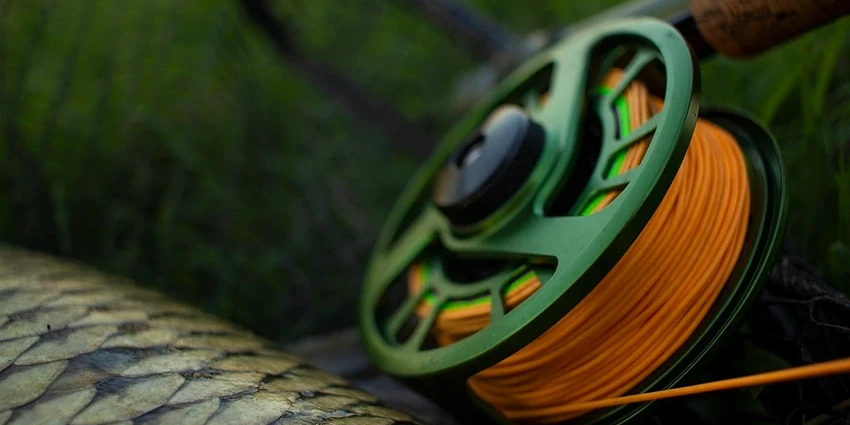All products were chosen independently by our editorial team. This review contains affiliate links and we may receive a commission for purchases made. Please read our affiliates FAQ page to find out more.
Bass fishing enthusiasts know the thrill of the chase and the peace of being surrounded by nature. It’s not just about the catch; it’s about the experience, the techniques, and the destinations that make bass fishing a beloved adventure for many. In this exploration, we dive into the heart of bass fishing across the United States, uncovering the best destinations and techniques that make each spot unique.
Jump to:
Introduction to Bass Fishing
Bass fishing is more than a hobby; it’s a passion that unites anglers from all walks of life. The excitement of landing a largemouth or smallmouth bass is unmatched, making it one of the most popular forms of freshwater angling.
Top Bass Fishing Destinations in the USA
The United States is home to some of the most iconic bass fishing destinations. Each location offers a unique experience, from the vast Lake Okeechobee in Florida to the legendary St. Lawrence River in New York. Here’s a glimpse into some of these renowned spots:
1. Lake Okeechobee, Florida
- Size: 730 square miles
- Popular Techniques: Live shiners, topwater frogs
- Best Time to Visit: Year-round, with peak seasons in spring and fall
2. Lake Guntersville, Alabama
- Size: 69,000 acres
- Habitats: Hydrilla and milfoil grass, steep ledges, shallow sloughs
- Targeting Big Bass: Focus on thick cover and breaklines
3. St. Lawrence River, New York
- Famous For: World-renowned smallmouth bass fishing
- Seasonal Behavior: Spawn in early summer, move to deeper structures as summer progresses
4. Chickamauga Lake, Tennessee
- Nickname: “Land of the Giants”
- Known For: Giant 10-plus-pound Florida-strain largemouth bass

5. Lake Fork, Texas
- Record: Home to 65% of Texas’s 50 biggest bass
- Fishing Tip: Fish the shallows in spring for trophy catches
Bass Fishing Techniques for Rivers and Lakes
Bass fishing techniques vary depending on the environment. Here are some general techniques for rivers and lakes:
River Fishing
- Focus on Transitions: Look for areas where the river’s flow changes.
- Cover is Key: Bass often hide near structures like logs, rocks, and vegetation.
Lake Fishing
- Deep Water Tactics: Use drop shots and jigs in deeper waters.
- Shoreline Strategies: Spinnerbaits and crankbaits are effective near the shore.
Equipment Essentials for Bass Fishing
While specific gear can vary, here are some essentials for any bass fishing trip:
- Rod and Reel: The foundation of any angler’s gear is a reliable rod and reel combo. For bass fishing, a medium-heavy rod offers the perfect balance of sensitivity and strength, allowing you to feel the bite and fight the fish with confidence. Pair it with a versatile reel that can handle various fishing techniques, from casting to trolling, ensuring smooth operation and durability.
- Line and Lures: The choice of fishing line and lures is critical in bass fishing. A durable, high-quality fishing line is essential for withstanding the abrasive environments where bass often reside, such as around structures and under cover. The selection of lures should be varied, including jigs for precision, crankbaits for depth and coverage, and soft plastics for versatility. Each lure type serves a specific purpose, from mimicking prey fish to provoking aggressive strikes.
- Fishing Boat: A boat is more than just a means of transportation; it’s a mobile platform for accessing the best fishing spots. For bass fishing, a boat that can navigate both the open water and tighter spots near cover is ideal. It should offer stability for casting and the space to store all your gear, including rods, lures, and safety equipment.
- Fillet Knife: After a successful day of fishing, a top-quality fillet knife is indispensable for preparing your catch. The best fillet knife is one that is sharp, durable, and comfortable to hold, making the cleaning and filleting process efficient and safe. A good fillet knife allows for precise cuts, ensuring you get the most out of your catch while minimizing waste. Whether you’re preparing fish on the boat or in the kitchen, a fillet knife specifically designed for the task can make a significant difference in the quality of your fillets.
Understanding Bass Behavior and Habitat
Bass behavior changes with the seasons, making it crucial to understand their habits:
- Spring: Bass move to shallow waters for spawning.
- Summer: Look for bass in deeper, cooler waters.
- Fall: Bass become more active and feed aggressively.
- Winter: Slow down your techniques as bass become less active.
Table: Seasonal Bass Fishing Tips
| Season | Behavior | Techniques |
| Spring | Shallow waters for spawning | Use soft plastics and spinnerbaits |
| Summer | Deeper, cooler waters | Drop shots and deep-diving crankbaits |
| Fall | Active feeding | Topwater lures and jerkbaits |
| Winter | Less active | Slow-moving jigs and finesse tactics |
Register for our latest in-depth reviews and product round-ups from the experts
Enter your email address below to receive our twice monthly reviews emails.
By entering your details, you are agreeing to our terms and conditions and privacy policy. You can unsubscribe at any time.
Advanced Bass Fishing Techniques
Bass fishing is an art that requires both skill and strategy. Here are some advanced techniques to consider:
Precision Casting
- Objective: To place your lure exactly where you want it.
- Ideal for: Targeting bass hiding under cover or in tight spots.
Flipping and Pitching
- Used in: Shallow waters with heavy cover.
- Technique: Short, underhand casts using heavy gear to get lures into dense cover.
Drop Shotting
- Best for: Deep water fishing.
- Method: A weight is tied at the end of the line, with a hook and bait up the line.
Table: Advanced Techniques Comparison
| Technique | Ideal Conditions | Gear Required |
| Precision Casting | Clear waters, near structures | Medium-heavy rod, accurate reel |
| Flipping and Pitching | Heavy cover, shallow waters | Heavy rod, strong line |
| Drop Shotting | Deep waters, clear lakes | Light line, specialized weights |
Planning Your Bass Fishing Trip
A successful bass fishing trip requires careful planning. Here are some tips to ensure a memorable experience:
- Research the Destination: Understand the type of bass present and the best fishing spots.
- Check Weather and Water Conditions: These can significantly affect bass behavior.
- Prepare the Right Gear: Based on the techniques you plan to use.

Conservation and Sustainable Fishing Practices
Conservation is key in bass fishing. Here are some sustainable practices:
- Catch and Release: Helps maintain the bass population.
- Use Eco-friendly Gear: Avoid gear that can harm the aquatic ecosystem.
- Respect Local Regulations: Adhere to size and bag limits.
Frequently Asked Questions
Spring and fall are generally the best times, as bass are more active due to spawning and feeding.
Yes, but you’ll need to adjust your techniques, as bass are less active in cold water.
Overlooking the importance of stealth, using the wrong bait, and not adapting to changing conditions.
Very important. Bass can be particular about colors, especially in clear water.
Both times can be productive, but many anglers prefer early morning when bass are actively feeding.







